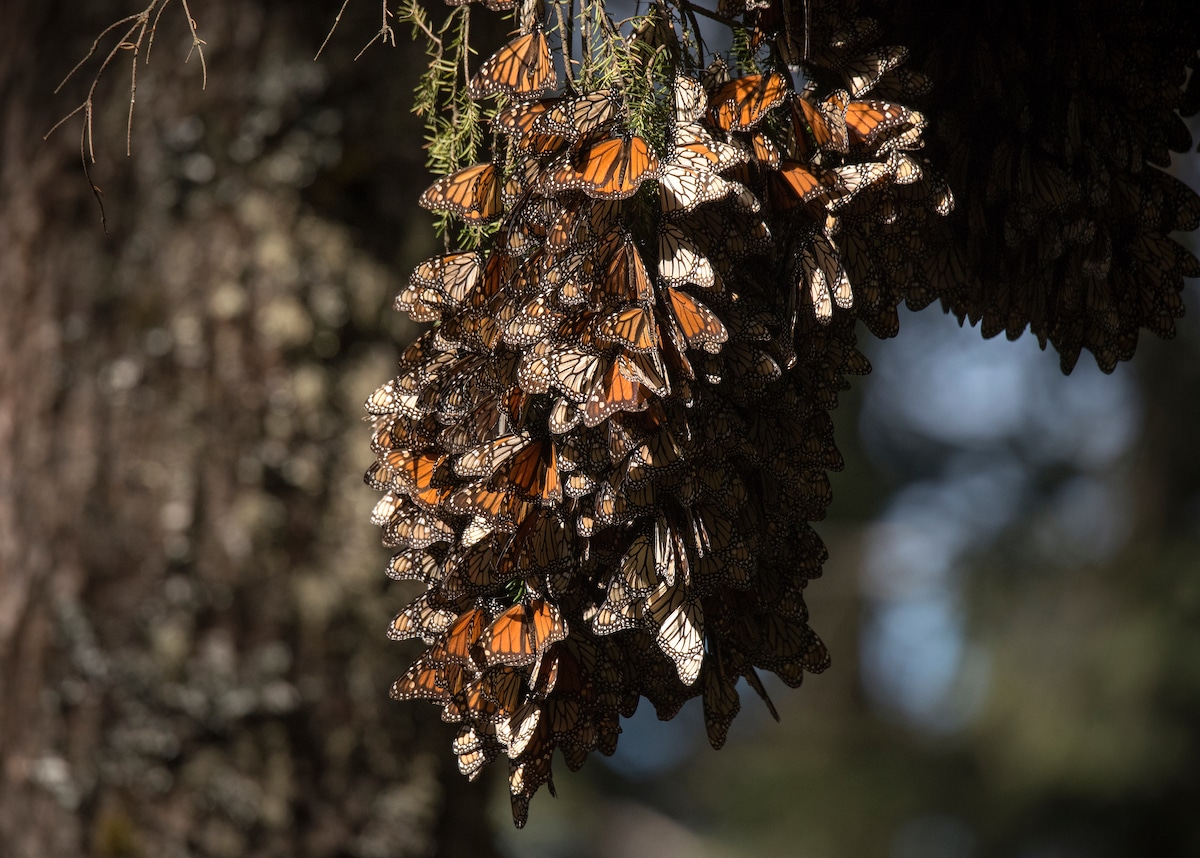

After many years of plummeting populations of migrating monarch butterflies, a WWF-Mexico survey brings good news: during the 2021-2022 overwintering period, the monarch butterfly presence observed in the forests of Mexico was 35% higher than the previous year. While the butterflies are still vulnerable and require more conservation efforts, the survey gives some hope for recovery.
The survey, Forest Area Occupied by the Colonies of Monarch Butterflies in Mexico During the 2021-2022 Overwintering Season, measured the amount of forest the butterflies cover, since it is too difficult to count each butterfly. In total, WWF-Mexico noted that 10 colonies of monarch butterflies spanned 2.835 hectares (7.005 acres) of forest in late December 2021, up 35% from the 2.10 (5.189) hectares covered in 2020. Six colonies covered 2.174 (5.372 acres) hectares inside the Monarch Butterfly Biosphere Reserve, a World Heritage Site. An additional 0.661 hectares (1.633 acres) of forest outside the reserve were also covered in butterflies.
“The increase in monarch butterflies is good news and indicates that we should continue working to maintain and reinforce conservation measures by Mexico, the United States, and Canada,” Jorge Rickards, general manager of WWF-Mexico, said in a press release. “Monarchs are important pollinators, and their migratory journey helps promote greater diversity of flowering plants, which benefits other species in natural ecosystems and contributes to the production of food for human consumption.”
The forest coverage for monarch butterflies varies from year to year, but it has been on a general decline for decades. In the 1996-1997 overwintering period, experts measured 18.19 hectares (44.726 acres) of forest covered in butterflies. In recent years, the butterflies covered just over 6 hectares in 2006-2007 and 2018-2019.
Several factors contribute to the overall population decline. Monarch butterflies rely on milkweed for reproduction, but agricultural practices, including reliance on Round-Up-ready crops, has depleted the number of milkweed plants across the migration route. Other insecticides and herbicides, as well as the bacterial pesticide Bacillus thuringiensis, further threaten the butterflies, as do parasites and pathogens.
Illegal logging has decreased the amount of forests in the reserve and beyond where butterflies migrate to. Climate change has also impacted the migration of monarch butterflies, as the increasing temperatures can shift environmental cues for migration and make their overwintering habitat too warm.
The latest population survey gives hope for recovery for monarch butterflies, but more work is needed to combat the threats that have contributed to their steady decline.

 233k
233k  41k
41k  Subscribe
Subscribe 